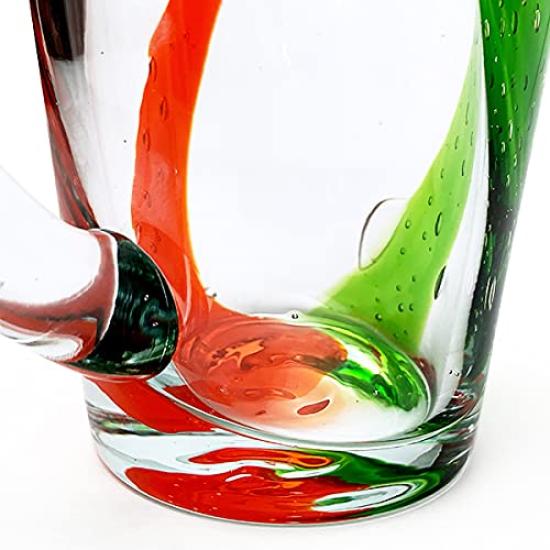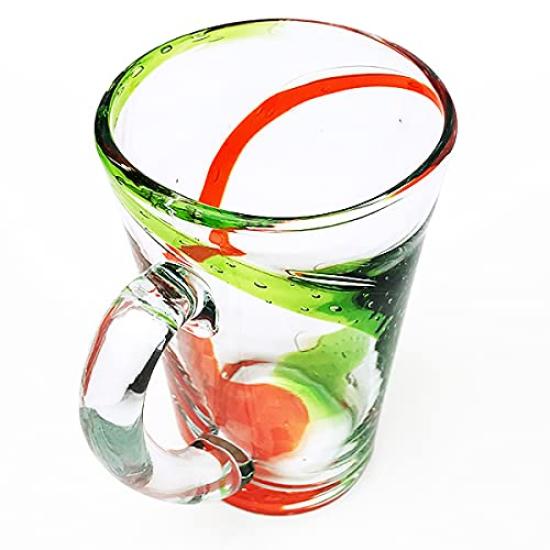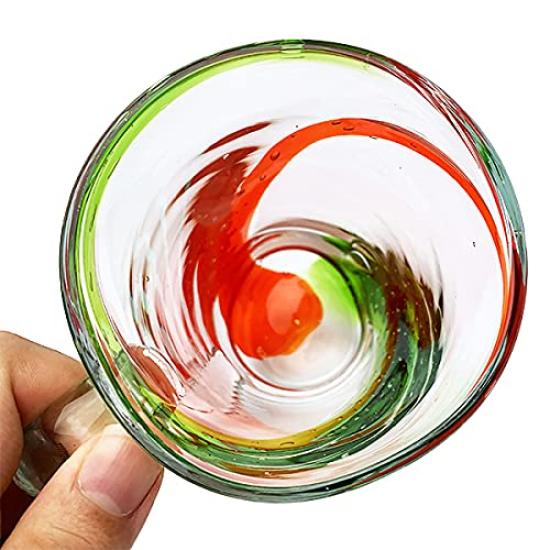Welcome to Select Items Norisuke.
We are Japanese seller. We ship authentic items from Japan. Please enjoy shopping with peace of mind! You will find popular and useful products in Japan!
[Material: Soda glass] [Size: Height: approx. 13.5cm Diameter: approx. 9.0cm Base width: approx. 6.0cm] [Weight: approx. 470g] [Capacity: approx. 400ml (when full)] [Manufacturing method: Ryukyu glass products using the blown glass manufacturing method] [Production location: China (*Japanese domestic food inspection completed)]
The origins of Ryukyu glass...Ryukyu glass is said to have begun to be made around the middle of the Meiji period. Among Okinawa's many traditional crafts, it is a new craft with a relatively short history. It began to be mass-produced shortly after the war, when it began to be made for American military personnel stationed there. It is said that the colorful Ryukyu glass that continues to this day was born by recycling empty soft drink bottles discarded by American soldiers who occupied Okinawa at the time.
The development of Ryukyu glass...Due to the historical background of the American military continuing to be stationed there even after the war, Ryukyu glass achieved remarkable development. At that time, the main raw material for Ryukyu glass was recycled glass. It was thick and had air bubbles in the glass, and the main color was not the bright, primary colors that we see today, but rather a dull transparent color. However, it lacks the transparency, coolness, and delicacy characteristic of glass found in other glassware, and its deep color and unique bubbles are more appreciated as a uniquely Okinawan charm, and it has continued to this day. Air bubbles, which would normally be treated as defective products, are a characteristic of Ryukyu glass, and even today, as more and more workshops use glass as a raw material, it has been passed down as a simple taste and art of light.
The heart of a Ryukyu glass craftsman...The manufacturing methods for Ryukyu glass include ``air blowing,'' in which the glass is wound onto the tip of a blowing rod and blown into shape, and ``mold blowing'', in which the glass is blown directly into a mold. The glass blowing process during molding must be completed before everything gets completely cold. The glass is heated to 1,400 degrees and melts to a melting consistency, constantly moving like a living thing. The work, where you don't let up even for a moment, becomes hotter than you can imagine. Under such circumstances, by tuning in to the movement of the glass, which seems to have a will, and facing the inherent characteristics of glass, the colors and brilliance of Ryukyu glass that go beyond the intentions and techniques of its creators are born.
About glass products: All the glass products we sell are handmade by craftsmen. No two pieces have exactly the same color or pattern, and they all have different expressions. Please understand that this is the real thrill of being handmade. Please enjoy the handmade taste created by skilled glass craftsmen.
Precautions for use: This product is not heat-resistant glass or tempered glass. Please refrain from using in the dishwasher, hot water, boiling water, microwave oven, etc. Glass products may break due to sudden temperature changes. Please be careful not to cool or warm it too quickly.
>>The origin of Ryukyu glass<<
It is said that Ryukyu glass began to be made around the middle of the Meiji period.
Among Okinawa's many traditional crafts, it is a new craft with a relatively short history.
It began to be mass-produced shortly after the war, when it began to be made for American military personnel stationed there.
It is said that the colorful Ryukyu glass that continues to this day was born by recycling empty soft drink bottles discarded by American soldiers who occupied Okinawa at the time.
>>Development of Ryukyu glass<<
Due to the historical background in which the American military continued to be stationed there even after the war, Ryukyu glass developed significantly.
At that time, the main raw material for Ryukyu glass was recycled glass.
It was thick and had air bubbles in the glass, and the main color was not the bright, primary colors that we see today, but rather a dull transparent color.
However, it lacks the transparency, coolness, and delicacy characteristic of glass found in other glassware, and its deep color and unique bubbles are more appreciated as a uniquely Okinawan charm, and it has continued to this day.
Air bubbles, which would normally be treated as defective products, are incorporated, utilized, and deepened as a characteristic of Ryukyu glass, and even today, as more and more workshops use raw glass, it continues to be passed down as a simple taste and art of light.
>>The heart of Ryukyu glass craftsmen<<
There are two ways to make Ryukyu glass: ``air-blowing,'' in which the glass is wound onto the tip of a blowing rod and then blown into shape, and ``mold-blowing,'' in which the glass is blown directly into a mold.
The glass blowing process during molding must be completed before everything gets completely cold.
The glass is heated to 1,400 degrees and melts to a melting consistency, constantly moving like a living thing.
The work requires you not to relax even for a moment,
It will be hotter than you can imagine.
Under such circumstances, by tuning in to the movement of the glass, which seems to have a will, and facing the inherent characteristics of glass, the colors and brilliance of Ryukyu glass that go beyond the intentions and techniques of its creators are born.
>>About glass products<<
All of the glass products we sell are handmade by craftsmen.
No two pieces have exactly the same color or pattern, and they all have different expressions.
Please understand that this is the real thrill of being handmade.
Please enjoy the handmade taste created by skilled glass craftsmen.
>>Precautions for use<<
This product is not heat-resistant glass or tempered glass.
Please refrain from using in the dishwasher, hot water, boiling water, microwave oven, etc.
Glass products may break due to sudden temperature changes.
Please be careful not to cool or warm it too quickly.




























